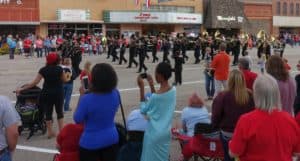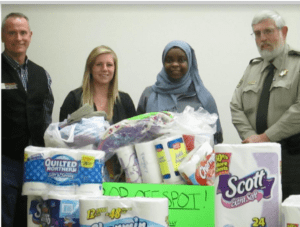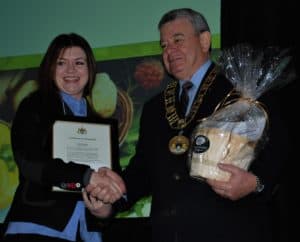
Communities are the foundation of our society, and their strength and success lie in the unity of its members. Yet, often at the heart of so many communities is disunity.
As a community coach, I collaborate with rural leaders to build local capacity and engage community members in working on local priorities so their community can thrive. One of the most common topics that comes up as the groups are planning for future outcomes is their desire for unity with other community leaders. They recognize disunity as a polarizing barrier to their success as they strive to engage other individuals, organizations, or elected officials in creating a thriving community. When addressing disunity, one challenge of being a community coach is feeling the need to “fix it” because as an outsider it’s often easier for me to recognize those blind spots. However, my role is to empower individual leaders to own their failures and create solutions for putting unity back into the community.
What causes divisiveness?
Do personal disagreements turn into community standoffs? Photo by Becky McCray
So, what is it that brings disunity to a community? Below is a list of some common culprits:
Lack of trust between leaders and community membersResistance to changeLeadership immaturityNo defined purpose or visionInconsistency in meetingsUnfulfilled promisesCompetition for resources or powerUnclear communication methodsSelf-centered interestsBurnout and stressAllowing events to railroad relationships
To address disunity as a polarizing barrier to developing a thriving community, it’s essential to name the specific causes at play from the list above and implement strategies to mitigate them. Below is a list of improvements that can be made by individuals, organizations, or elected officials to find more unity in their community:
Open Communication
The foundation of any united community is open and honest communication. Offer encouragement and opportunities for community members to express their thoughts, ideas, and concerns. Create platforms for discussion, whether through community meetings, online forums, or social events. Effective communication ensures that everyone’s voice is heard, fostering an inclusive atmosphere where decisions are made collectively.
Include Everyone

When you include everyone, what will that look like? Photo by Becky McCray
Diversity is a strength, and inclusivity is key to building unity. Celebrate and respect the differences among community members, including cultural, social, and economic diversity. Develop programs that actively involve people from all backgrounds, ensuring that everyone has a place at the table. When people feel valued and heard, unity naturally follows.
Purpose and Goals
A united community needs a clear purpose and shared goals. These goals can be as simple as improving neighborhood safety, organizing cultural events, or addressing local environmental issues. When community members work together towards a common purpose, it strengthens their sense of unity. Ensure that the goals are transparent, achievable, and reflect the diverse needs and aspirations of your community.
Connect through Collaboration

How can you help people work together across groups? Photo via Deb Brown
Create opportunities for collaboration within your community. Encourage community members to form teams and work together on projects, whether it’s a local garden, community signage, or organizing social events. Collaborations not only improve the quality of life but also foster a powerful sense of belonging and shared responsibility.
Empower and Engage
Empower community members to take ownership of their shared spaces and challenges. When individuals feel a sense of responsibility for their community, they become more invested in its well-being. Encourage people to take on leadership roles, participate in local governance, and contribute to the betterment of the community.
Inspire Learning
Promote education and awareness about programs or initiatives within your community and from resources outside the community. When community members are well-informed, they are more likely to respect and support each other’s values, leading to a stronger sense of unity.
Celebrate Achievements

Find more ways to celebrate more successes in your community. Photo courtesy of Norfolk County, Ontario.
Celebrate the milestones of your work and recognize the efforts of individuals and groups who have contributed to the betterment of the community. Regularly holding events and celebrations not only instills a sense of community pride but also reinforces the feeling of unity and camaraderie.
Conflict Resolution
No community is without its conflicts. The key to maintaining unity lies in how these conflicts are managed. Establish an impartial conflict resolution process that allows for disagreements to be addressed constructively. Mediation and open dialogue can help community members find common ground and reach mutually acceptable solutions.
Commitment to Planning
Keeping unity in the community is an ongoing process that requires long-term planning. Establish a vision for the future and work collaboratively to achieve it. Encourage community members to stay engaged and commit to building a strong, unified community for generations to come.
Building unity in a community is a transformative process. By following these essential steps, your community can create a sense of belonging and togetherness that will empower its members to thrive and make a positive impact on society.
Subscribe to SmallBizSurvival.
The Community Coach. Having a passion for community leadership and development is what drives Paula Jensen’s personal and professional life. Paula lives in her hometown of Langford, South Dakota, population 318+. She serves as a Strategic Doing practitioner, grant writer and community coach with Dakota Resources based in Renner, South Dakota. Dakota Resources is a mission-driven 501c3 Community Development Financial Institution working to connect capital and capacity to empower rural communities. Contact her at [email protected].







